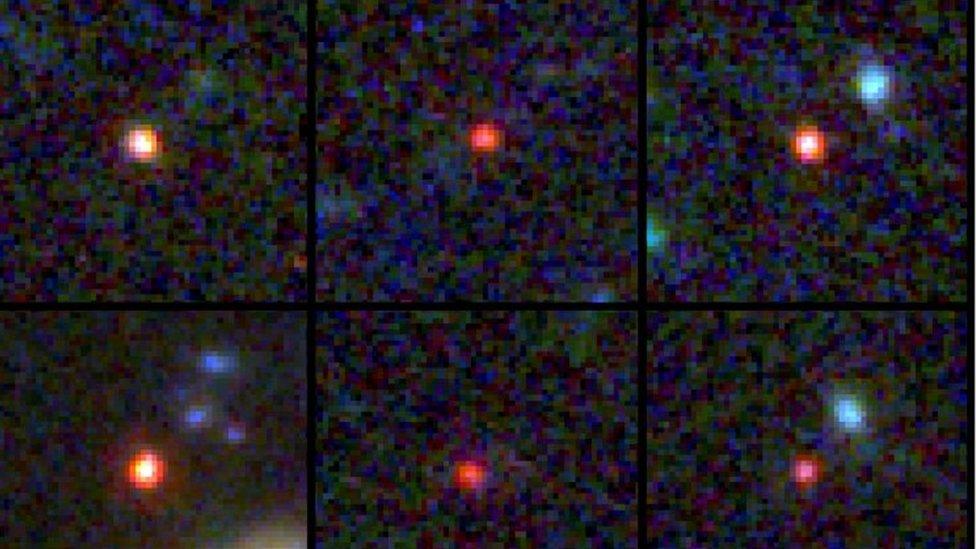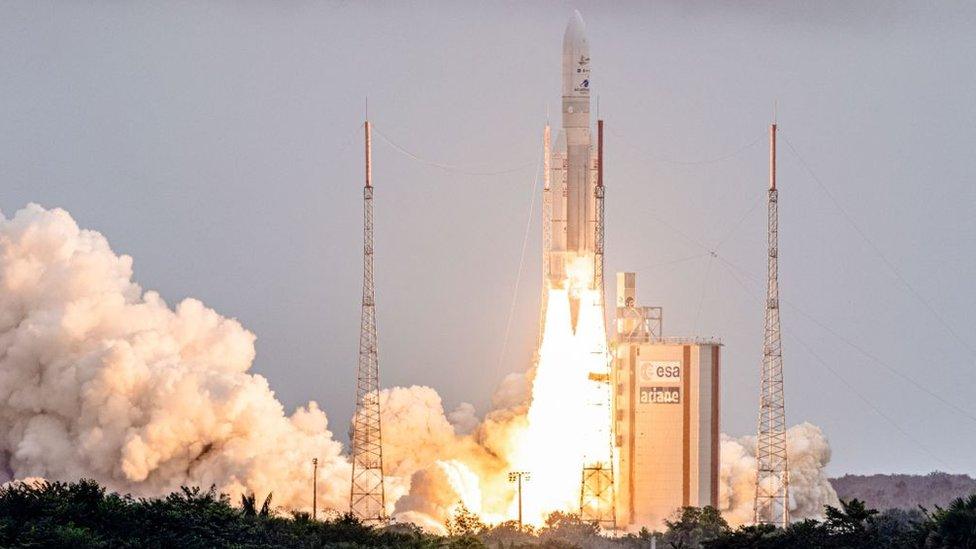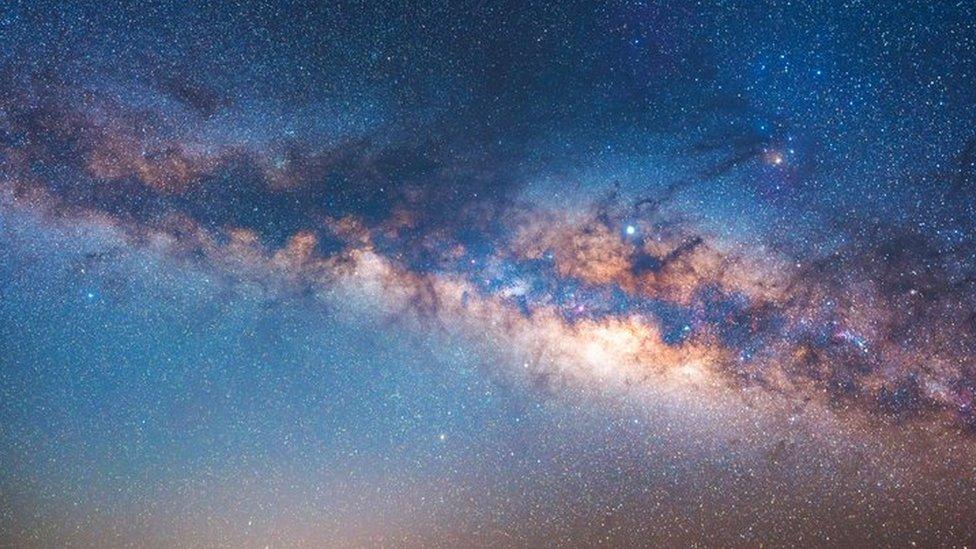James Webb Space Telescope: World's biggest telescope discovers six ancient galaxies
- Published
- comments

Experts say the six ancient galaxies appear to be roughly 13.5 billion-years-old and shouldn't exist!
Scientists have revealed that the James Webb Space Telescope has discovered six ancient galaxies that "shouldn't exist"!
Experts say that the galaxies date back to when the universe was in its very early stage, and are roughly 13.5 billion-years-old.
What's really surprised researchers is that the galaxies are so old and are far bigger than anyone expected - in fact Nasa say they shouldn't exist!
They think the important discovery could help us learn more about the beginnings of the universe and could even change our understanding of how galaxies are formed.
What have scientists found?

Nasa launched the James Webb telescope on 25 December 2021 on its mission to show the first stars to light up the universe
The James Webb Space Telescope was launched into space 14 months ago and uses infrared technology.
It is equipped with instruments that can detect light that was emitted by the most ancient stars and galaxies.
This allows scientists to see back in time, near to the beginning of the universe as we know it.
Scientists were surprised to find these six galaxies which they say are as mature as our own galaxy, the Milky Way - at a time when the universe was very young and only 3% of its current age!
Joel Leja, assistant professor of astronomy and astrophysics at Penn State University in America, said: "These objects are way more massive than anyone expected.
"We expected only to find tiny, young, baby galaxies at this point in time, but we've discovered galaxies as mature as our own in what was previously understood to be the dawn of the universe."
Mr Leja added: "It turns out we found something so unexpected it actually creates problems for science. It calls the whole picture of early galaxy formation into question."

Scientists think the new galaxies are as big as our Milky Way galaxy
Scientists are now planning further observations to study the galaxies more closely and confirm their findings.
Mr Leja explained: "This is our first glimpse back this far, so it's important that we keep an open mind about what we are seeing.
"While the data indicates they are likely galaxies, I think there is a real possibility that a few of these objects turn out to be obscured supermassive black holes."
